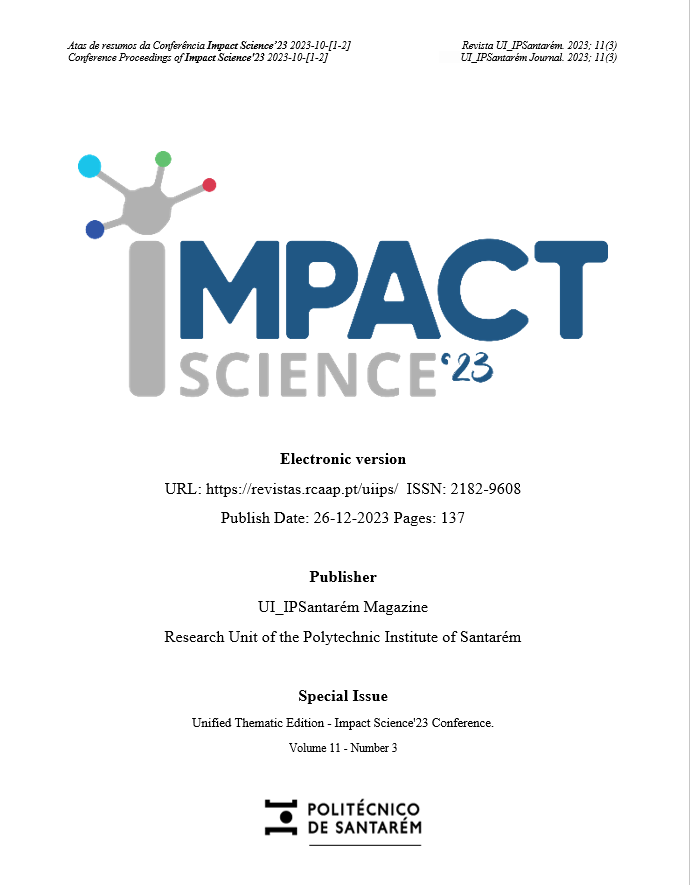Allergenicity risk of edible insects, a systematic review of human studies
DOI:
https://doi.org/10.25746/ruiips.v11.i3.32027Keywords:
insects; edible; allergiesAbstract
BACKGROUND: Eating insects is a common practice in Africa, Asia, Australia or Latin America, where insects constitute an important source of nutrients. Edible insects farming is environmentally friendly, requiring less food, water and land use, and emit lower greenhouse gases, compared to traditional animal protein sources. Such circumstances prompted interest from Western countries and in Europe, edible insects as an emerging food source can be framed in the category of novel foods and novel food ingredients. Even so, there are some concerns about food safety issues, such as food allergies due to direct sensitization and due to imunoglobulins E (Ig E) cross-reactivity between insects, crustaceous and house dust mite (HDM) allergens, generally known as pan-allergens. In the view of the possibility of insect farming and commercialization in Europe, the European Food Safety Authority has requested scientific risk assessments on the use of insects as food, with particular focus on allergenicity. This study aimed to perform a systematic review to update information regarding allergenicity of insects. METHODS: To conduct this review, comprehensive searches were performed in PubMed, Web of Science, and Science Direct using specific keywords related to edible insects and allergies. The inclusion criteria were focused on human studies published between 2012 and 2022, two sets of keywords were utilized, and only articles written in European languages were included. Data extraction was conducted independently by two researchers, encompassing study characteristics and outcomes. A standardized form was also constructed based on the Cochrane Collaboration’s tool for assessing risk of bias for human studies. RESULTS: The consulted studies evinced clinical significance of mopane worm allergens in an African rural community exposed form harvesting, with 50% of the participants sensitized and exhibiting respiratory health symptoms. Additionally, a case report described a severe food anaphylaxis in France caused by consuming a cooked mealworm larva in a subject who was allergic to HDM but not crustaceans; the specific proteins in the mealworm identified as allergens included hexamerin, tropomyosin, α-amylase (structurally similar to house dust mite), and larva cuticle proteins A1A and A2B. Cross-reactivity studies conducted to investigate allergenic similarities between different insects, showed also cross-allergenicity between cricket and shrimp, with tropomyosin identified as a major allergen. In another work, cross-reactivity between yellow mealworm allergens, crustaceans, and house dust mite was also demonstrated, with tropomyosin and arginine kinase identified as major cross-reactive allergens. A study on the effect of thermal processing on allergenicity showed that some proteins were thermostable, and that the effect of thermal treatment on the IgE cross-recognition of the allergens was protein-, species- and treatment-specific. Despite it was achieved that thermal processing partially reduces cross-allergenicity, HDM, shrimp and mealworm allergic patients were advised to be cautious about consuming insects. CONCLUSION: These studies highlight the need for caution when consuming edible insects, particularly for individuals with known allergies to related allergens. They provide valuable information on allergenic potential, cross-reactivity, and the impact of processing methods, helping to better understand and manage allergic risks associated with edible insects.
Downloads
Published
How to Cite
Issue
Section
License
Copyright (c) 2023 Vanda Andrade, Nair Cunha, Paula Ruivo, Paula Pinto

This work is licensed under a Creative Commons Attribution-NonCommercial-NoDerivatives 4.0 International License.
Authors publishing in this journal agree to the following terms:
Authors retain copyright and grant the journal the right of first publication, with the article simultaneously licensed under the Creative Commons Attribution License that allows sharing of the work with acknowledgement of authorship and initial publication in this journal.
Authors are permitted to enter into additional contracts separately for non-exclusive distribution of the version of the article published in this journal (e.g., publish in an institutional repository or as a book chapter), with acknowledgment of authorship and initial publication in this journal.
Authors have permission and are encouraged to publish and distribute their work online (e.g., in institutional repositories or on their personal webpage) at any point before or during the editorial process, as this may generate productive changes, as well as increase the impact and citation of the published work.





